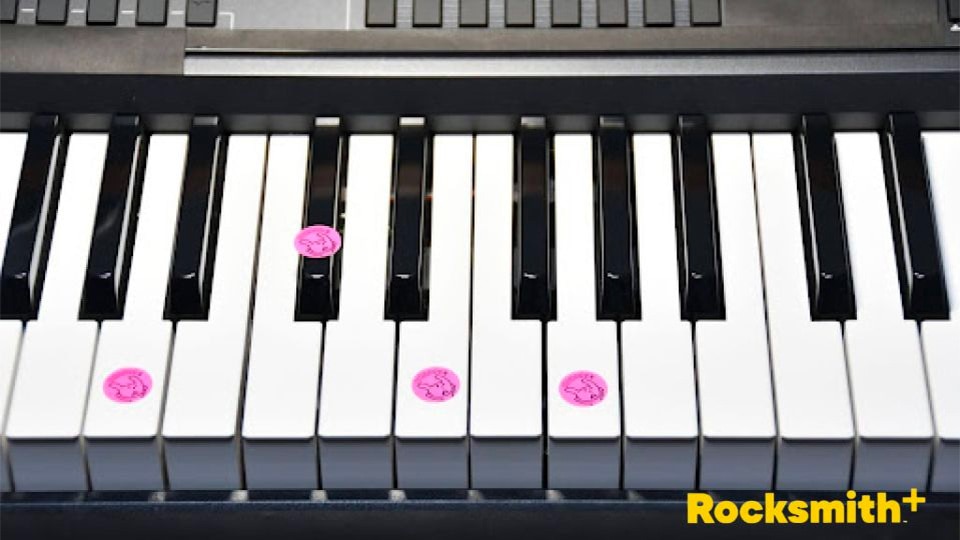Welcome to your next step in your piano journey: mastering the A7 chord. This dominant 7th chord is an important stepping stone in strengthening your piano skills. The A7 chord is a four-note chord consisting of A, C#, E, and G. This makes it a member of the Dominant 7th chord family.
Practicing the A7 chord might be challenging at first, but with a few tips and consistent practice, you'll get the hang of it. Let's start this new phase of your piano journey together.
The Basics of the Piano Keys
Let's talk about the different types of keys on the piano. The white keys are known as natural keys, and they represent the seven natural notes of music: C, D, E, F, G, A, and B. The black keys are known as sharp or flat keys, and they represent a half-step up (sharp) or down (flat) from the natural keys. Knowing the names and positions of these keys is crucial in learning how to play chords, like the A7 chord, on the piano.
What Are the Notes of the A7 Chord?
![[RS+] News - How To Play an A7 Chord on Piano - img 2](http://staticctf.ubisoft.com/J3yJr34U2pZ2Ieem48Dwy9uqj5PNUQTn/1zm0yXAVSR9SbDISLkx2oz/02bab6c263d739ce142b91b89f4432ec/a7notes.jpeg)
After familiarizing yourself with the keyboard, you're now ready to dive into the heart of piano playing: the chords. Specifically, we're going to explore the notes of the A7 chord. This is a Dominant 7th chord, meaning it's built from the root note, a major third, a perfect fifth, and a minor seventh.
The notes that make up the A7 chord are A, C#, E, and G. A is the root note, C# is the major third up from the root (A), E is the perfect fifth from the root (A), and G is the minor seventh up from the root (A). These four notes combine to create the unique sound of the A7 chord.
One thing that's great about the A7 chord is that it uses a combination of both white and black keys on the piano. This will give you good practice in transitioning between the two types of keys as you play.
How To Play A7 With Your Right Hand
Now that we've familiarized ourselves with the keyboard and learned the notes of the A7 chord, it's time to put our knowledge into practice.
The A7 chord, also known as the A Dominant 7th, is a major chord with an added minor 7th. This combination gives the A7 chord its unique sound. The notes that make up the A7 chord are A, C#, E, and G.
![[RS+] News - How To Play an A7 Chord on Piano - img 3](http://staticctf.ubisoft.com/J3yJr34U2pZ2Ieem48Dwy9uqj5PNUQTn/chbGkYT33a5Tl0xFKwMsu/a4b66cacf6ee3210f99235aba2a85899/a7fingers.jpeg)
To play the A7 chord with your right hand, start by placing your thumb (1st finger) on A. Next, place your index finger (2nd finger) on C#. Your middle finger (3rd finger) should be positioned on E. Lastly, your pinky (5th finger) will complete the chord by playing G. Your ring finger (4th finger) will remain idle for this chord.
Remember, your fingers should rest naturally on the keys without any tension. This will help you to play smoothly and avoid any potential strain or injury.
How To Play A7 With Your Left Hand
We've learned how to play the A7 chord with our right hand --- now, let's explore how to do the same with our left hand. The left hand typically starts an octave lower than the right and descends, which may feel a bit counterintuitive, especially if you're right-handed.
To begin, position your 5th finger or pinky on the A note below Middle C. Next, place your middle finger on C#, your index finger on E, and your thumb on G.
Playing With Both Hands
Let's talk about integrating both hands now. It's a big step, but one that will truly bring your piano-playing skills to life.
Start by placing your right hand's thumb on the A above Middle C, and your left hand's pinky on the A note an octave below Middle C. Begin by playing both A notes simultaneously, then move through the A7 chord note by note, transitioning from A to C# to E to G.
Remember, the goal at this stage is not speed but coordination. The more you practice, the more natural it will feel to play the A7 chord with both hands. It might feel like a challenge now, but with time and patience, this will become second nature.
What Are Some Practice Tips for Learning the A7 Chord?
As we transition from understanding the mechanics of playing the A7 chord with both hands, let's dive into some effective practice tips for learning the A7 chord on the piano.
-
Consistency Is Key: Make it a point to practice the A7 chord daily, even if it's only for a few minutes. This helps reinforce learning and bolsters muscle memory.
-
Utilize a Metronome: A metronome is your best friend when it comes to maintaining a steady rhythm. Start at a slower tempo, gradually increasing it as your confidence builds with the A7 chord.
-
Break It Down: If you're finding the A7 chord challenging, don't hesitate to break it down. Practice individual notes or hand positions until you feel comfortable. Apps like Rocksmith+ can be extremely helpful with their Riff Repeater feature, which allows you to focus on specific parts of songs at your own pace.
-
Stay Relaxed: Keep your hands, shoulders, and overall posture relaxed while playing the A7 chord. Any tension can inhibit your movement and potentially cause strain. For tips on maintaining relaxation and proper form, Rocksmith+ offers a Posture and Technique lesson video.
-
Set Achievable Goals: Instead of trying to master the entire A7 chord in one go, set small, attainable goals for each practice session. This could be playing each chord tone separately, such as playing A, going to C#, going to E, then pressing G. You can play these notes separately with just one hand or both hands.
Remember, learning to play the A7 chord, like any piano skill, is not a race. It's a journey to be enjoyed. So, relax, enjoy the process, and let the music flow. Up next, we'll discuss the next steps in your piano journey.
The Next Steps in Your Piano Journey
Having explored the basics of playing the A7 chord on piano, you're now equipped with a new tool to enhance your musical journey. Whether it's a dominant 7th, or another type of chord, like a major, minor, or maj7, each chord brings a unique color to your music palette. The A7 chord is a starting point, a stepping stone in your path to becoming a proficient pianist.
The Bottom Line
As you continue to learn, you'll encounter a diverse range of chords and musical structures. Each will expand your understanding and appreciation of the piano and its rich tonal possibilities. Just as you've mastered the A7 chord with your right and left hands, you'll soon be playing complex pieces and captivating your audience with your musical prowess.
Remember, practice is key to mastering any chord. Alongside your A7 practice, explore other chords and the way they interact within a piece of music. Discover the joy of creating harmonious melodies and the satisfaction of progressing in your piano journey.
With Rocksmith+, you can pair your piano practice with guitar and make your music journey even more exciting. Plus, you gain access to a song library with over 400 songs to practice and master. Your musical adventure is far from over --- embrace the challenge, enjoy the journey, and before you know it, you'll be playing beautiful music.
Sources:
19. The Dominant Seventh Chord - Fundamentals, Function, and Form | Milne Publishing
Learning Types of Seventh Chords: Major, Minor, & Diminished | Hoffman Academy
What Is The Root Of A Chord? | Hello Music Theory
Tips for Keeping Pianist Fingers Relaxed at the Keyboard | Hoffman Academy









